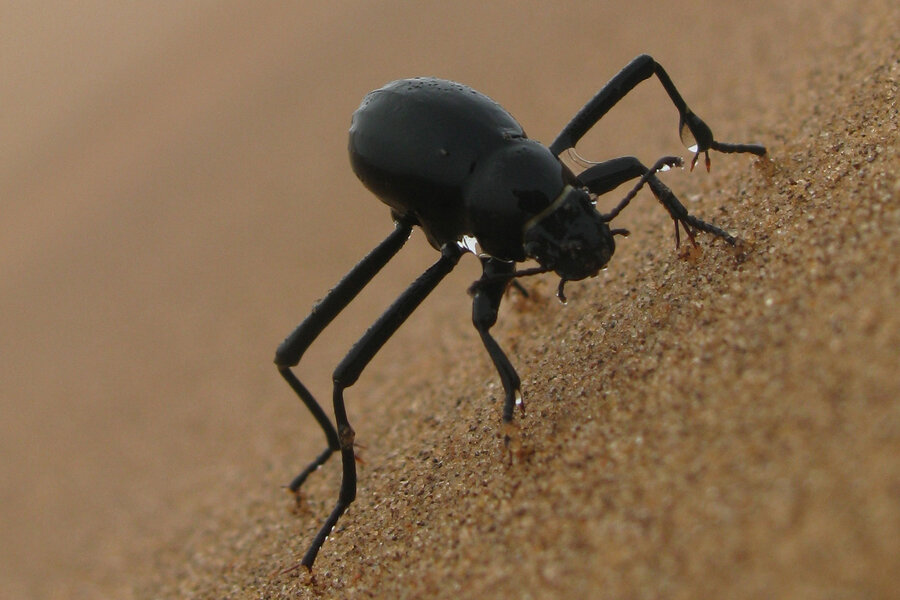What a cactus, a beetle, and a pitcher plant can teach about harvesting water
Loading...
After teaching scientists how to defrost airplanes, a beetle is now helping humans harvest water.
A recent Harvard study shows that scientists are now looking at multiple natural sources, including the Namib desert beetle, for inspiration on how to harvest water. The topic has gained traction for many researchers as more areas of the world are affected by drought every year.
Scientists in the study have used lessons from nature to construct a new method for generating and directing water formed from condensation. The new method will exponentially increase water generation and could have real world impact, researchers say. It is also one of the first to combine studies of multiple natural sources into a single solution.
“There’s really no limits for who can apply [bio-inspired designs] to their work and how,” Erin Connelly, director of communication and outreach at the Biomimicry Institute in Montana, told The Christian Science Monitor in an interview earlier this month. There are thousands of solutions that can be learned from nature, she added.
The scale of potential solutions sourced from nature becomes exponentially higher as scientists learn to mix and match solutions, explains Joanna Alzenberg, the Amy Smith Berylson professor of materials Science at SEAS and a member of the Wyss Institute, in a Harvard press release:
Everybody is excited about bio inspired research.... However, so far, we tend to mimic one inspirational natural system at a time. Our research shows that a complex bio-inspired approach, in which we marry multiple biological species to come up with non-trivial designs for highly efficient materials with unprecedented properties, is a new, promising direction in biomimetics.
Controlling condensation is fundamental to many water-harvesting systems, as well as desalination plants, air conditioning systems, and thermal power generators among many other modern day technologies. However, every design so far has had challenges in three areas: water generation, direction, and growth.
The team of researchers behind the study from Harvard University's John A. Paulson School of Engineering and Applied Sciences (SEAS) and the Wyss Institute for Biologically Inspired Engineering at Harvard University, combined lessons learned from cacti, pitcher plants, and the Namib Desert beetle to help solve those problems in a new water-harvesting system.
The unique geometry and formation of cactus spines helped direct water droplets toward the base of the plant. By applying that same geometry to a new water generation system, the researchers were able to develop a fast-track path for water droplets to follow. The addition of a nano-coating inspired by the skin and coating found on pitcher plants sped up the droplets movement even more. Bumps found on the Namib desert beetle turned out to be an ideal model for protrusions designed to promote condensation.
The unique bumps on the back of Namib Desert beetles have been the subject of much scientific research. The Christian Science Monitor has reported on how the bumps have inspired ways to facilitate frost on airplanes and the construction of the first self-filling water bottle. Scientists used the same principles to help the new water-harvesting system attract more condensation.
The new system could help harvest water in arid climates and also be added to a range of existing materials that require water drip system to function.
“Thermal power plants, for example, rely on condensers to quickly convert steam to liquid water,” said Philseok Kim, co-author of the paper and vice president of technology at SLIPS Technologies, Inc, in the Harvard press release. “This design could help speed up that process and even allow for operation at a higher temperature, significantly improving the overall energy efficiency.”
When it comes to what nature can teach us, “we haven’t even scratched the surface yet,” Ms. Connelly told the Monitor.








